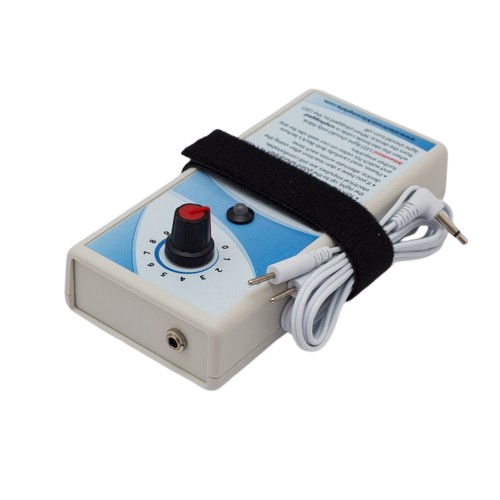PEMF Therapy for Depression: Can Pulsed Electromagnetic Fields Lift Your Mood?
Pulsed Electromagnetic Field (PEMF) therapy has gained attention in recent years—not just for physical pain relief, but for mental health benefits, too. Most notably, there’s growing interest in its potential to help treat depression. But how does exposing the brain to electromagnetic pulses help with mood? And is there solid science to back it up?
Let’s dive into the fascinating intersection of electricity, neuroscience, and mood regulation.
What Is PEMF Therapy?
PEMF therapy uses low-frequency electromagnetic pulses to stimulate cells and tissues in the body. Unlike the constant exposure we get from Wi-Fi routers and power lines, PEMF devices deliver targeted, rhythmic pulses that mimic the Earth’s natural frequencies.
Key Features of PEMF:
- Non-invasive and painless
- Delivered via mats, coils, or wearable devices
- Frequencies typically range from 1 to 100 Hz
- Sessions last from a few minutes to about an hour
PEMF has been used in Europe for decades to accelerate healing, reduce inflammation, and even promote bone regeneration. But now, it’s being studied for its neurological effects, particularly on depression and anxiety.
How PEMF May Help With Depression
PEMF therapy works by influencing the electrical activity of cells, especially neurons. Since our thoughts, moods, and behaviors are governed by electrical and chemical activity in the brain, it makes sense that targeted electromagnetic pulses might have an impact.
Here’s how PEMF is believed to support mental health:
1. Improved Neurotransmitter Balance
Studies suggest PEMF can increase the availability of mood-related neurotransmitters like serotonin and dopamine. These brain chemicals play a key role in regulating mood, pleasure, motivation, and energy levels—often lacking in people with depression.
2. Stimulation of Neuroplasticity
Neuroplasticity refers to the brain’s ability to adapt and form new neural pathways. Depression can lead to a kind of “stuck” brain state, where negative patterns repeat. PEMF may promote the formation of new, healthier connections, helping the brain rewire itself out of depressive loops.
3. Improved Blood Flow to the Brain
Depressed individuals often have reduced cerebral blood flow. PEMF has been shown to improve microcirculation, enhancing oxygen and nutrient delivery to brain tissues, which may support recovery and clarity.
4. Reduced Inflammation and Oxidative Stress
Depression isn’t just psychological—it has biological markers too, including inflammation. PEMF appears to lower inflammatory cytokines and combat oxidative stress, which are both linked to depressive symptoms.
What Does the Research Say?
Clinical Studies and Trials
- A 2001 study in Psychiatry Research found that low-frequency PEMF significantly improved mood in patients with treatment-resistant depression after just two weeks of use.
- A 2014 pilot study published in BMC Psychiatry showed that transcranial PEMF (using a head-worn device) produced statistically significant improvements in depressive symptoms compared to placebo.
- In 2022, a randomized controlled trial using PEMF headsets for 8 weeks found comparable outcomes to SSRI antidepressants—but without the side effects like weight gain or emotional blunting.
FDA-Cleared Devices
Some PEMF devices are now FDA-approved for treating depression, such as the Fisher Wallace Stimulator, which delivers gentle electrical pulses to the brain. These devices are usually prescribed by mental health professionals and may require consistent, at-home use.
PEMF vs. TMS: What’s the Difference?
PEMF is often confused with TMS (Transcranial Magnetic Stimulation)—another electromagnetic therapy for depression. The differences include:
| Feature | PEMF | TMS |
| Frequency | 1–100 Hz | 10–20 Hz (but stronger pulses) |
| Intensity | Low-field | High-field |
| Application | At home (mats, headbands) | In clinics only |
| Side Effects | Minimal | Possible headaches, scalp pain |
| FDA Approval | Limited | Yes, for treatment-resistant depression |
While TMS is more intense and focused, PEMF is more accessible, gentle, and holistic—suitable for people who want to try a low-risk, non-pharmaceutical approach.
Who Might Benefit?
PEMF therapy could be a promising option for:
- People with mild to moderate depression
- Those who don’t respond well to medication
- Individuals seeking natural or complementary treatments
- People sensitive to drug side effects
- Those managing seasonal affective disorder (SAD) or anxiety alongside depression
Are There Risks?
PEMF therapy is generally considered very safe, with minimal side effects. Some users report:
- Mild dizziness
- Sleep disturbances (if used late at night)
- Temporary fatigue after sessions
However, people with pacemakers or implanted electrical devices should avoid PEMF unless cleared by a medical professional.
Final Thoughts: A New Frontier in Brain Wellness?
PEMF therapy represents a fascinating frontier in using electricity to heal not just the body, but the mind. For centuries, we’ve known that electrical stimulation can affect the nervous system. Now, with targeted, pulsed technology, we’re learning how to fine-tune the brain’s energy field in subtle, restorative ways.
While more research is still needed, the results so far are promising—and for many struggling with depression, PEMF offers a beacon of hope.
This material reflects personal research conducted in my spare time and is intended for informational purposes only. It does not constitute medical advice. Always consult a qualified healthcare provider.
